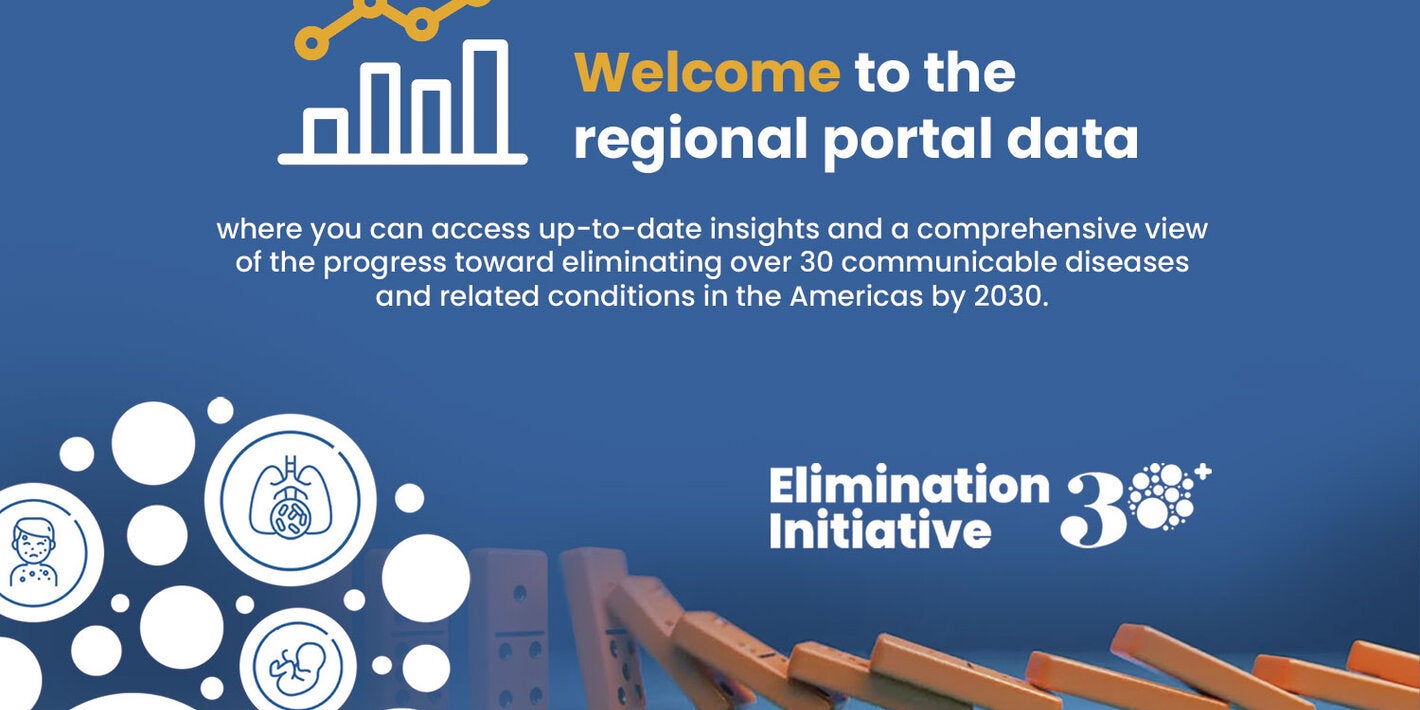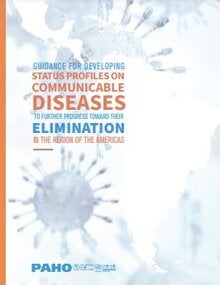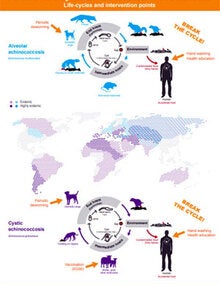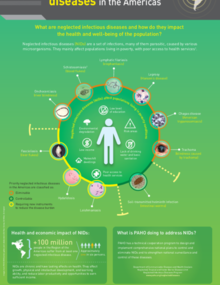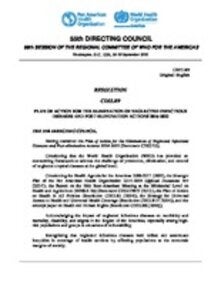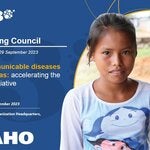Human echinococcosis is a parasitic disease caused by tapeworms of the genus Echinococcus.
The two most important forms of the disease in humans are cystic echinococcosis (hydatidosis) and alveolar echinococcosis. Humans are infected through ingestion of parasite eggs in contaminated food, water or soil, or through direct contact with animal hosts.
Echinococcosis is often expensive and complicated to treat and may require extensive surgery and/or prolonged drug therapy. Prevention programs focus on the deworming of dogs and sheep, which are the definitive hosts. In the case of cystic echinococcosis, control measures also include improved food inspection, slaughterhouse hygiene, and public education campaigns. The vaccination of lambs is currently being evaluated as an additional intervention.
More than 1 million people are affected with echinococcosis at any one time.
WHO estimated in 2015 that echinococcosis caused
19,300
deaths and around
871,000
disability-adjusted life-years (DALYs) globally each year.






